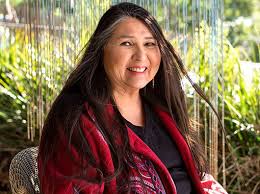As I outlined in my Big Idea summary, the preliminary source I am using to start my research is the film “Reel Injun” from Cree director Neil Diamond. I was exposed to this film in another class and, while I found it entertaining and a good introduction to Indigenous people on film, there are several opportunities for critique or further investigation. This film follows the production of the “Hollywood Indian” through various historical periods, beginning with the very first motion pictures and leading to forms of representation in the present day. What I am hoping to use from this source is a historical outline of the Hollywood production of Indigenous identity and how these productions have served to both help and hinder Indigenous peoples’ fight for sovereignty and self-determination.

The area that I am most interested in exploring is the gulf that exists in the representation of Indigenous women and queer Indigenous bodies in film. Much of this film deals with the construction and representation of a specific form of Indigenous masculinity. This construction presents an understanding of Indigenous identities that closely adhere to settler colonial gender dynamics and doesn’t explore the decolonial power of representations of Indigenous identities that fall outside of these dynamics. This leaves very little room to establish a decolonized representation of Indigenous peoples, particularly through representations of gender and sexuality. Other than in a few short segments, the film is largely lacking an Indigenous feminist perspective or any sort of investigation into the harmful narrative of certain kinds of masculine identities. This all serves to build harmful stereotypes of Indigenous people that reach a broad audience, forming settler society’s perceptions of Indigenous peoples and inhibiting Indigenous peoples’ ability to control representation and present cultural identities and practices. Deconstructing these forms of representation works towards presenting a decolonized view of Indigenous identities. The ability to use new media to tell stories, perform identity and build healing forms of representation is an important aspect in resurgence and resistance.

In my research I hope to incorporate scholarly sources as well as other films that both illustrate the harmful nature constructions of Indigenous masculinities that enforce the colonial apparatus. I also hope to provide sources that illustrate the healing power of representation through film as a form of story telling that decolonizes gender dynamics by deconstructing or removing the forms of representation that I will discuss in my exploration of the film.